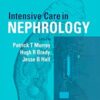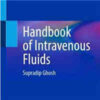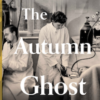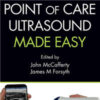Bringing Biological ARDS Phenotypes to the Bedside with Machine-learning-based Classifiers
thelancet.comThe identification of distinct phenotypes within heterogeneous disease states is a key component of personalised medicine, enabling enrichment of clinical trials, better prognostication, and delivery of tailored treatments to well defined, homogeneous patient subgroups.
In acute respiratory distress syndrome (ARDS), a clinically defined syndrome characterised by diffuse inflammatory alveolar insult and rapid onset hypoxaemia, subphenotypes have been identified with distinct clinical, radiological, genomic, and biomarker profiles.
Despite demonstrating differing outcomes and treatment responses across independent cohorts, use of subphenotypes in clinical practice has remained limited.
Phenotyping methods in research might not translate well to clinical implementation.
For example, expense or unavailability of biomarkers typically used in research, and variable interpretations of radiological and clinical findings described in the literature, can hamper or prevent attempts at real-world validation.
Intensive care units (ICUs) have differences in resource availability and local practices, and phenotyping approaches must have potential for implementation in a standard clinical workstream if they are to demonstrate widespread clinical utility.

















